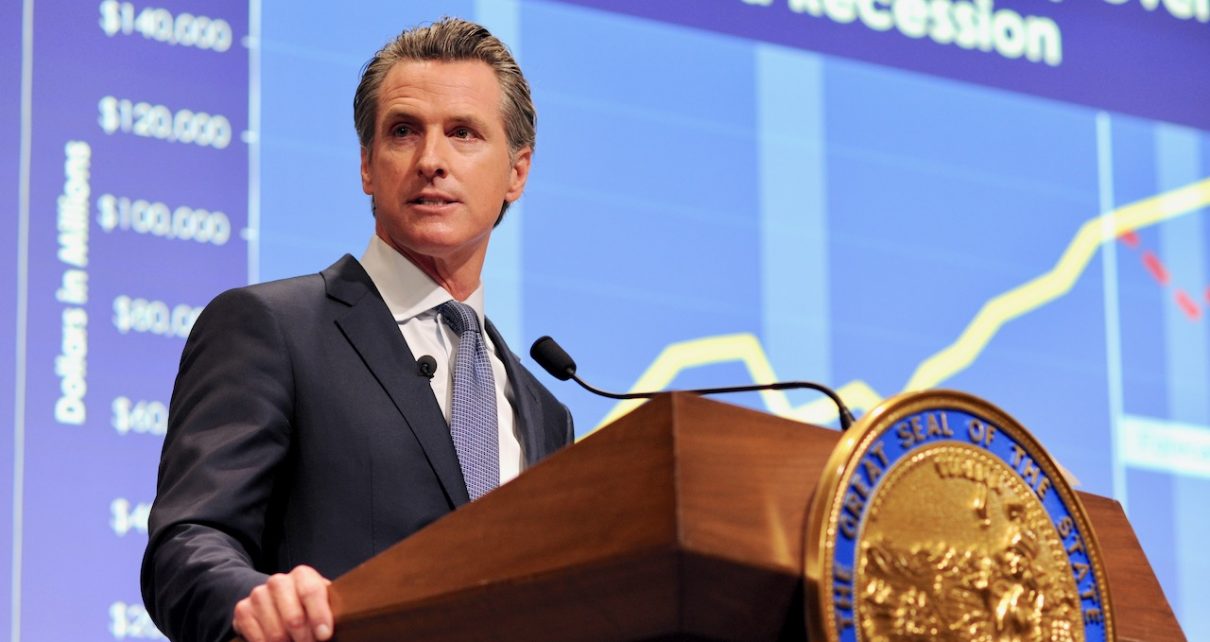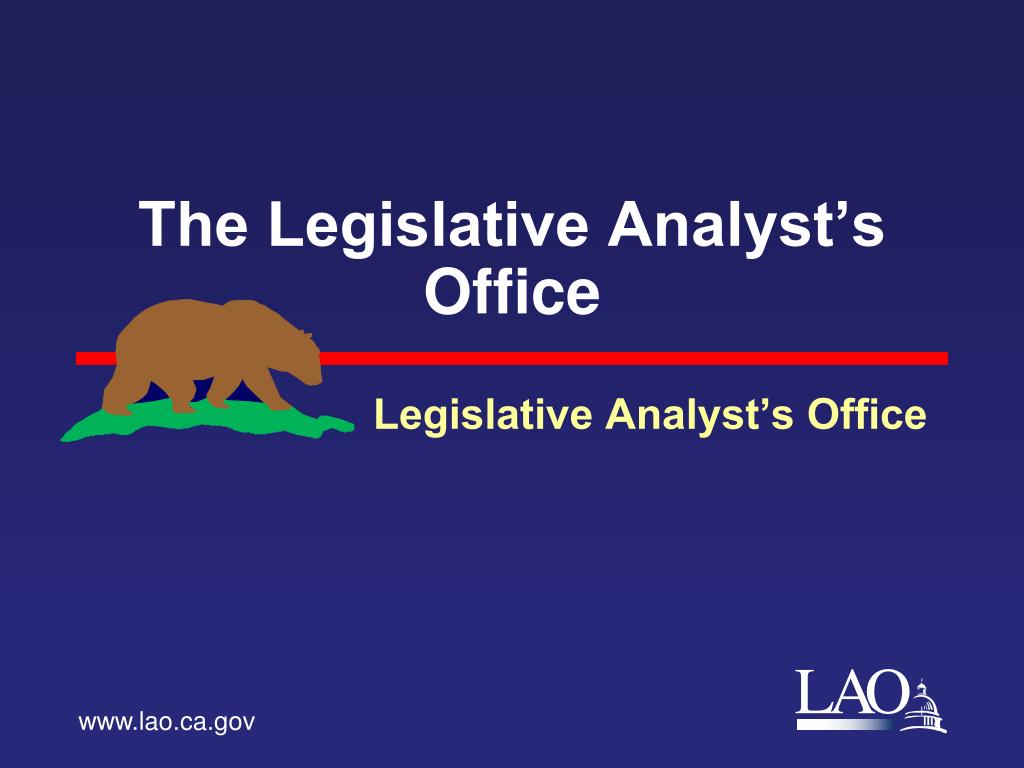
Gov. Gavin Newsom presents 2019 budget. (Photo: Kevin Sanders for California Globe)
Legislative Analyst Warns CA May Face Budget Shortfall as Early as Next Year
California is now heading towards a fiscal emergency
By Evan Symon, May 18, 2022 12:22 pm
The California Legislative Analyst’s Office (LAO) issued a warning on Tuesday that California may be facing a budget shortfall as early as next year due to to the increasingly likelihood of a recession, inflation, and Governor Gavin Newsom’s spending plan for the $97.5 billion budget surplus.
The Governor’s 2022-2023 budget proposal had already faced criticism from the LAO and others earlier this year for being possibly unsustainable. Last month, LAO officials warned that Newsom’s budget and a high budget surplus would trigger an appropriations limiting law, known as the Gann limit, and roughly reduce spending so that for every dollar going over the spending limit, $1.60 in spending needs to be going to required state budget spending, such as parks or education. With such a limit in place, the LAO warned that Newsom’s proposed budget needed to be slashed by at least $10 billion and that if an upcoming recession was detected, further cuts may have to be made.
“The legislature may want to consider rejecting around $10 billion of the proposed spending in the governor’s budget,” said LAO legislative analyst Gabe Petek last month. “It’s very counterintuitive, but we’re actually in a situation where each additional dollar of revenue over the limit worsens our budget outlook.”
With the U.S. now teetering on the verge of a recession this year, and Newsom upping proposed spending to $300.7 billion as per his May revised budget, the LAO says that California is now heading towards a fiscal emergency. With the Gann limit in place, Newsom’s proposed budget would have California be $3.4 billion over the budget limit that they are constitutionally be able to spend next budgetary year. Next year could be even bleaker, with the state being as much as $22 billion over the spending limit.
Combined with other factors such as revenues being so high that it brought a $97.5 billion surplus and a slight population loss, the LAO said that more funds being moved from budgetary spending to state reserves would help the state weather a recession and come out of it with minimal fiscal damage. According to the LAO, the longer term plan would either mean tax cuts for Californians to avoid such large surpluses in the future or legislatively increasing the Gann limit.
“The fiscal cliff that we’re talking about is that the state’s revenue picture is so strong it’s putting us on course to be above the state appropriations limit,” Petek said on Tuesday. “There is the risk revenues could go down because of a recession. In fact, we think the risk of recession has increased and that would present a whole different set of budget problems of course because we wouldn’t have enough revenue to pay for our existing commitments. That’s why we recommend the state and legislature consider adding to discretionary reserves. The discretionary reserves help us in either scenario.”
California facing possible budgetary issues despite record $97 billion surplus this year
Other economic officials note that while California does need to put some limitations in for some reduced spending to avoid any shortfalls in case of a recession, the LAO seems to be painting a more dire picture than what would happen.
“A recession and inflation are bad for everyone,” Felicia Peterson, an economist who has consulted with several cities and counties in California and other states in the past over budgetary issues, explained to the Globe on Wednesday. “Since 2000, California has made the mistake of getting a big surplus in good year, overspend, then face crisis. First it happened with the dot com boom going bust and then being compounded by 9/11. Then the great recession in the late 2000’s caused a four-year-long budget crisis that saw massive cuts in virtually every California agency and didn’t really end until 2012 when the state rebounded with a leaner budget intact.”
“We don’t want to face the prospect of having to raise UC and CSU tuition by a third again or forcing state employees to go on a four or three-day workweek. Now, we do have some billions being pushed into reserves, so that’s good. Plus, most of the proposed surplus spending is for one-time only things, so that means the budget will go down anyway next year. Also good. There’s more than enough fat to trim as is to at least miss any kind of deficit that crops up in a year, so at the very least, California has the time and resources to plan better.”
“We should be concerned and push for changes now so they don’t have to be drastic like previous downturns. But the sky isn’t falling just yet. As long as California prepares, learns from the previous two budget crises’, and puts in some budgetary fixes that the LAO is proposing, the state should be ready, or at least be in a position to get by.”
“But now is the biggest challenge: Getting the LAO, Governor, Assembly, Senate, and state agency leaders to actually agree on what to do.”
- San Diego Country Supervisor Jim Desmond Calls San Diego New Epicenter Of Illegal Crossings By Migrants - April 27, 2024
- Oracle Moving Headquarters Out Of Austin Only 4 Years After Moving Out Of California - April 26, 2024
- Congressman Adam Schiff Robbed of his Luggage in San Francisco Car Break In - April 26, 2024





“The LAO is too focused on numbers instead of how state budget can make people feel. The California state budget is based on emotions. Math is hard.” – Average Bay Area Legislator
Newsom has to spend the $22.5 billion earmarked in his budget to combat the “climate crisis” before the surplus evaporates. I’m sure all the Californians who now have to decide whether to spend their dwindling buying power on food or fuel are hoping the Governor can set aside enough funds to force the sun to set in the East.